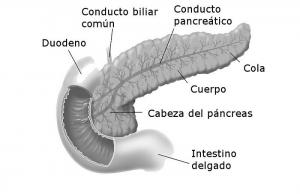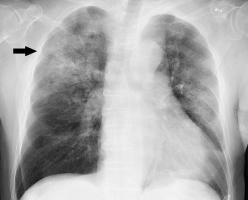The 5 differences between toxic and poisonous
The words toxic and poisonous are often used interchangeably in popular language. Many of us think that they are synonymous, often used to refer to an animal, plant or fungus that has a chemical compound that is harmful.
Although this definition is the closest to the popular one, the truth is that spinning a little finer we can find differences between toxic and poisonous, being very important to the world of biology.
Next we are going to see what are the differences between these two words, relating it especially to the animal world.
- Related article: "The 12 systems of the human body (and how they work)"
Differences between toxic and poisonous: learning to distinguish between both concepts
In nature, there are countless animals that synthesize their own chemical compounds as a method defense against predator attacks or, also, as a strategy to prey on other animals.
The synthesis and use of these substances is a very effective but also expensive strategy: nothing in the animal world is free and producing toxins is less so
, especially if we take into account that the foods that provide them with substances and energy to produce them are not always obtained.Many evolutionary biologists believe that the ability of certain species to produce toxins is attributable to the randomness of the genome. As surprising as it may seem, it is believed that throughout the history of evolution it has happened that an individual of a species, by sheer chance, it has suffered some type of mutation in its genetic code that has caused that instead of synthesizing a protein in a normal way, it does so with an alteration.
It may happen that after the mutation, the new substance is toxic to other animals, which makes the individual presenting it is protected or has a certain advantage within their species and their environment. If before it was an easy prey, now it is an indigestible prey for its predator and, if what happened was that before had to hunt for food, now it has an element that allows it to kill its victims more quickly.
Synthesizing a toxicant is an advantageous trait that makes individuals with the mutation more likely to survive and reproduce. This will progressively make the ability to produce the poison become a generalized ability in that species. thanks to natural selection, fixing the trait in the species although this does not mean that the species is toxic and / or poisonous These two words applied to living beings have their differences, which we will see later.
How is a poison different from a poison?
To understand the differences between what is toxic and what is poisonous, it is necessary to make a brief comment about what these two words mean in general terms. In Spanish, we use the terms “toxic” and “poisonous” as if they were synonymous and, generally, when we use them to describe the organism we want to indicate that this animal, plant, fungus or other has a chemical component that can be harmful to other beings alive.
Instead, other languages do make a distinction between the two concepts, being the case of the English language. In that language there are the words "venomous" ("toxic") and "poisonous" ("poisonous"), which are used differently depending on the characteristics of the animal when making use of its toxins. We will see these differences in more depth below.
1. The toxin is the unit, the poison the combination
The toxin would be the unit, while the poison the combination of several of them. A toxin is that harmful substance produced by an organism, which can cause damage to another living being.
Here we can understand the first difference between a toxin and a poison: the venom is made up of one or more toxins, while the toxin itself is simply a functional unit which can lead to different types of poisons.
Normally, toxins are peptides made up of several amino acids that are joined by peptide bonds and give rise to a protein. When a toxin is made up of a long chain of complex amino acids, we say that we are dealing with a toxic protein.
An example of a toxic protein would be ricin, produced by the species Ricinus communis It contains two chains with more than 260 amino acids each. In other words, it would be a poison made up of a single toxin.
Another different case would be the venom of the scorpion Androctonus bicolor, liquid which presents up to 103 unique toxic peptides. This means that the venom of this arachnid is made up of more than 100 toxins.
- You may be interested in: "Circulatory system: what is it, parts and characteristics"
2. The poison attacks, the toxin is passive
Poisonous animals inject poison, while toxic animals simply contain toxins but do not have to use them voluntarily. We can say that the poison is used as a weapon, it "attacks", while the toxin is simply found in the animal's body, in a more or less passive way.
For an animal to be considered poisonous, it must have some element in its anatomy that allows it to injecting toxic compounds into their victim's bloodstream, be it jaws, fangs, spurs, or stingers ...
3. Toxic animals do not inject toxins
Related to the previous point, we can say that those animals described as toxic do not have limbs that can be used to inject a poisonous substance. Many amphibians produce toxins, but they have nothing to attack or make a voluntary use of them with what cannot be considered poisonous.
An example of a particularly toxic amphibian is the case of the dendrobates frogs (Dendrobatidae), which have neither stingers nor fangs nor any system to inoculate their powerful toxins. Instead, they secrete their toxic compounds through the skin naturally, causing discomfort and serious symptoms to anyone who dares to lick them.
4. Toxic animals warn, poisonous go unnoticed
Toxic animals warn all potential predators that what they are going to find they will not likeWhile poisonous animals often do just the opposite, hiding and going unnoticed.
This is because many toxic animals are rarely predators, being rather animals that do not have great strength, size or defensive limbs. As before the bite of a predator they could do little, their organism has adapted to warn them not to dare because, if they do so, they run the risk of poisoning.
The best way to warn is through visual cues, the most striking being the use of garish colors such as phosphor blue, yellow, green and white on a black background, as is the case with many dendrobate frogs. This is also seen in some plants and fungi, and this phenomenon is called aposematism.
Instead, poisonous animals are often predators that use their toxins to weaken their victim while hunting it, making the predation process quick and energy less expensive. Therefore, they do not pay attention to attract the attention of their victim and many poisonous species have colors that allow them to camouflage themselves with the environment.

An example of this are poisonous snakes. It does not matter if we are in the desert, in the field, in the jungle or in the savannah. Whatever the environment, we will find this type of reptiles whose coloration will make them camouflage themselves very well so that their victims do not see them, not even when they are being attacked with their poison.
5. Neither toxic nor poisonous: toxúngens
Apparently, not all toxin-producing animals are toxic or poisonous. There are animals that produce toxins and contain them in their body, they cannot inject them but they can that can make a defensive and voluntary use of them: toxigenic organisms ("Toxungenous").
In this category we would find animals that produce toxins but do not inject them through jaws, fangs or stingers, but they do not wait to be ingested or touched to release them.
An example of a toxigenic animal would be skunks (Mephitidae). These animals are known to expel a smelly chemical through their anal glands when threatened. This substance is harmless in humans, but very harmful to pets such as dogs and cats who, after smelling it, may suffer vomiting, dizziness, temporary loss of vision and other serious symptoms.



